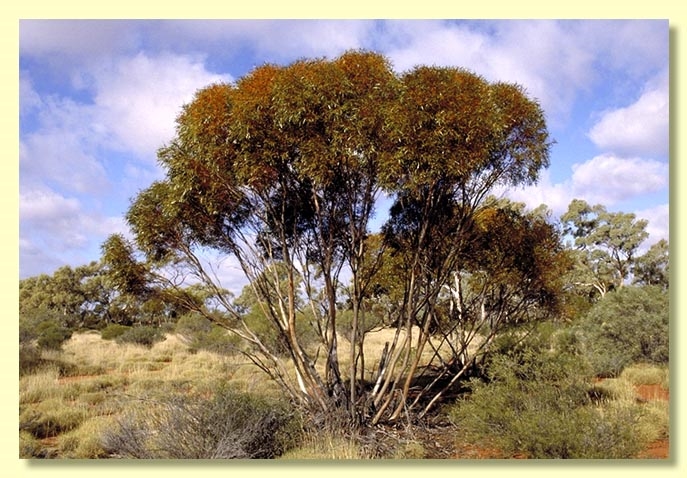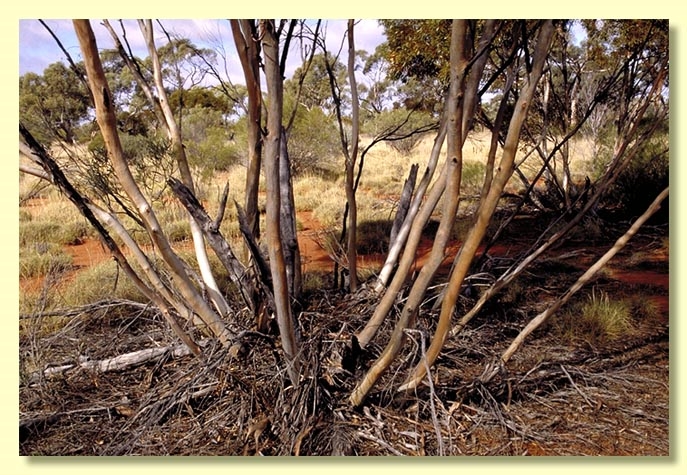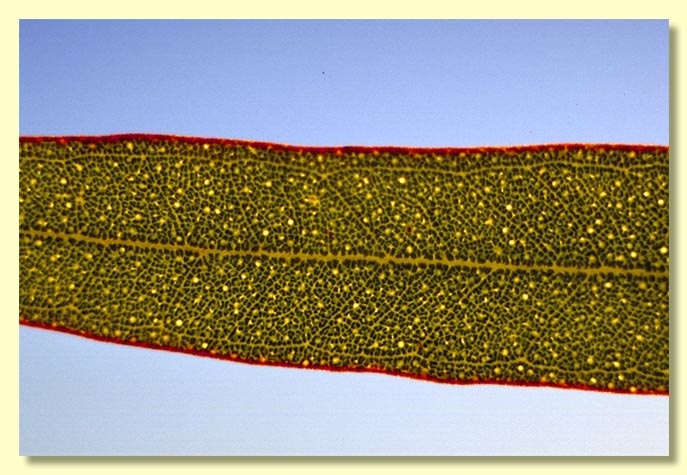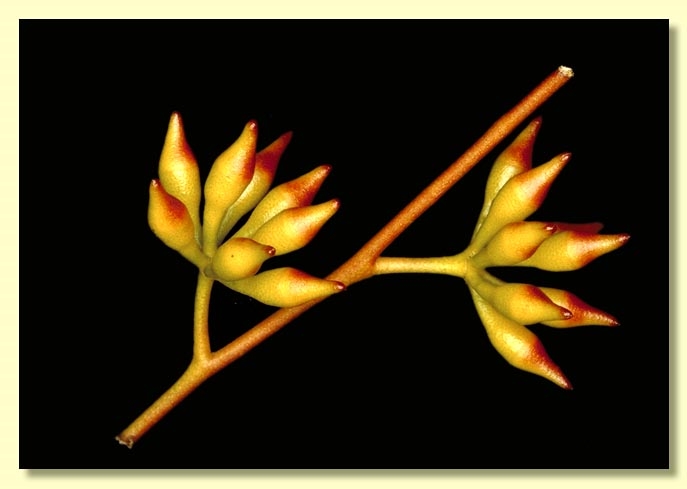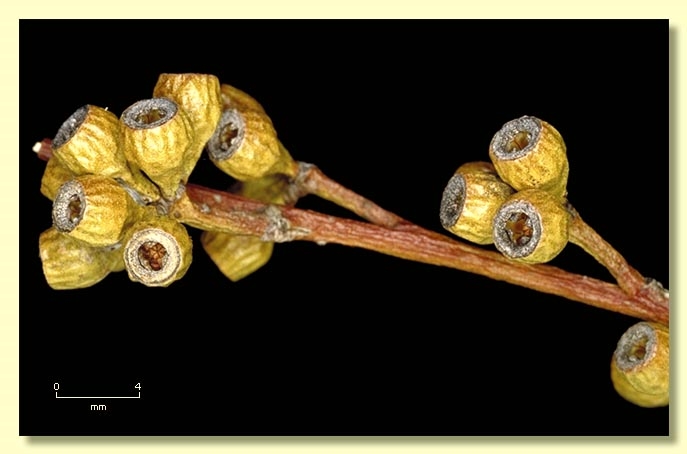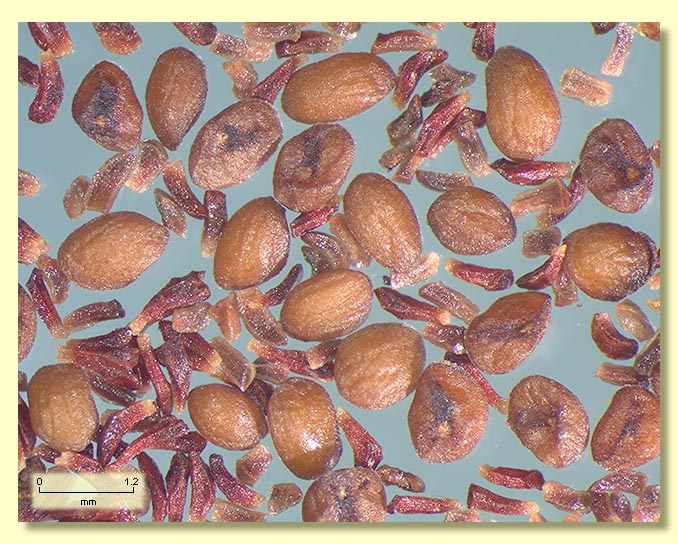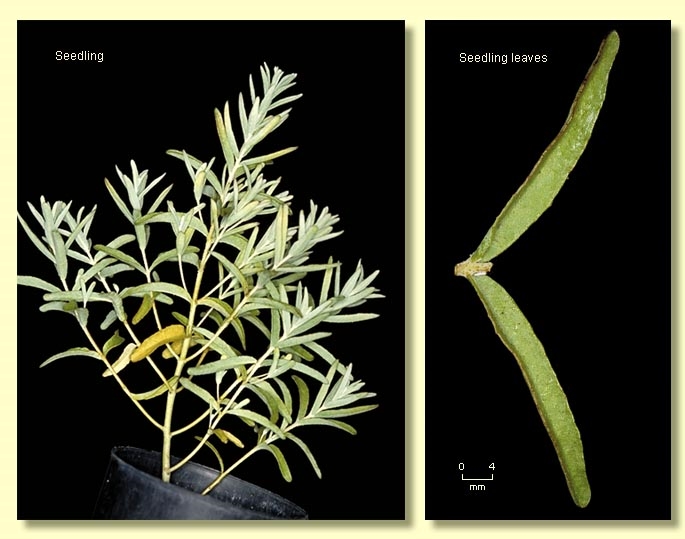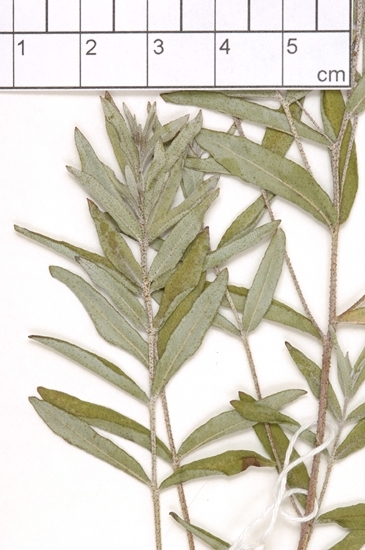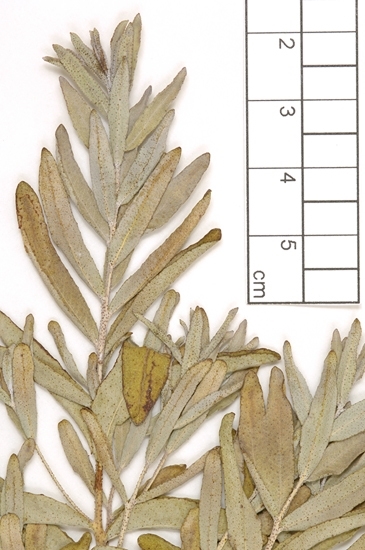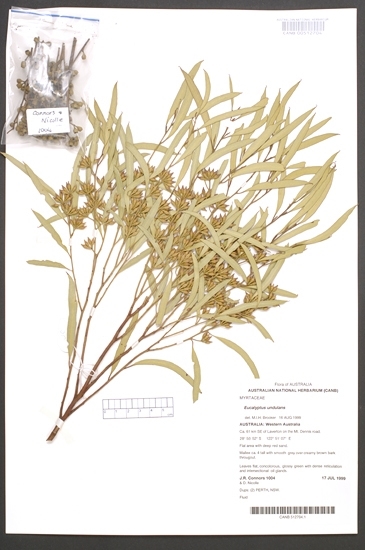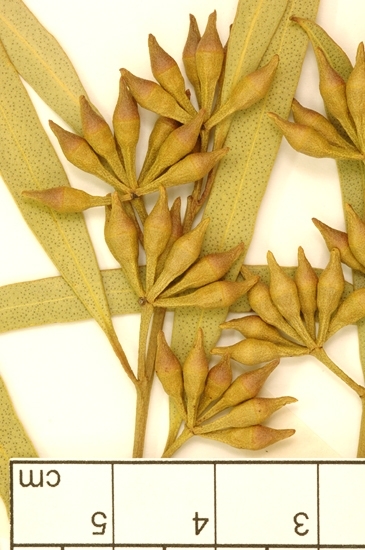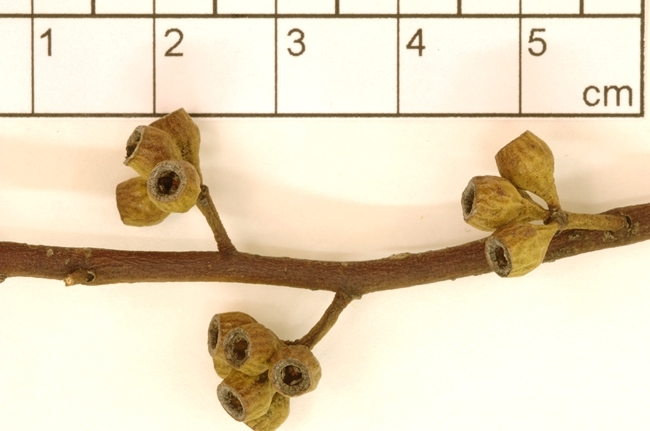Eucalyptus | Symphyomyrtus | Bisectae | Destitutae | Porantherae | Ovatae
Euclid - Online edition
Eucalyptus sp. Undulans
Bark smooth throughout, white, pale grey and pale.
Branchlets lacking oil glands in the pith.
Juvenile growth (coppice or field seedlings to 50 cm): not seen.
Adult leaves alternate, petioles 0.5–1 cm long; blade narrowly elliptic-lanceolate to linear, 4–7.5 cm long, 0.4–0.8 cm wide, base tapering to petiole, margin entire, apex pointed and hooked, concolorous, glossy, mid-green, thickish, side-veins greater than 45° to midrib, reticulation dense, intramarginal vein close to margin, oil glands scattered, intersectional.
Inflorescence axillary unbranched, peduncles slightly flattened, 0.2–1.3 cm long, buds 7 or 9 per umbel, pedicellate (pedicels c. 0.3 cm long). Mature buds ovoid to fusiform (c. 0.8 cm long, c. 0.3 cm wide), scar present, operculum beaked (c. 0.4 cm long), stamens inflexed, anthers cuneate-cuboid, adnate to filament apex (rigidly basifixed), dehiscing by sub-terminal pores, a few of the innermost stamens imperfectly formed, style long and straight, stigma tapered, locules 3 or 4, the placentae each with 4 vertical rows of ovules. Flowers not seen.
Fruit pedicellate, pedicels 0.2–0.3 cm long, barrel-shaped to truncate-globose, 0.4 cm long, 0.4–0.5 cm wide, rim moderately thick, disc level to slightly descending, valves 3 or 4, at rim level.
Seeds brown, 0.8–1.5 mm long, flattened-ovoid, surface smooth, hilum ventral.
Cultivated seedlings (measured at node 10): cotyledons Y-shaped (bisected); stems rounded in cross-section, glaucous, warty; leaves sessile, opposite, becoming alternate after 9 to 12 nodes but remaining sessile, narrowly elliptic-ovate, 1.5–3.5 cm long, 0.5–0.8 cm wide, base tapering, margin undulate when fresh, discolorous, dull green above and glaucous below. New growing tips crowded and glaucous.
Flowering time unknown.
A poorly known mallee species endemic to Western Australia occurring in the Laverton area on flat areas of deep red sand. It has smooth bark and glossy green leaves, beaked buds and small, squatly barrel-shaped fruit.
Eucalyptus sp. Undulans belongs in Eucalyptus subgenus Symphyomyrtus section Bisectae subsection Destitutae because the buds have two opercula, cotyledons are Y-shaped and branchlets lack oil glands in the pith. Within this subsection E. sp. Undulans belongs to a group of about 16 species, series Porantherae, that are further characterised by having anthers completely adnate to the staminal filaments, strongly inflexed stamens, densely reticulate leaves with intersectional oil glands and by the fruit with a distinct thick rim that includes a pale slightly descending disc. The small, glossy leaves of species in series Porantherae may result in confusion with species in series Heterostemones;, however, the fruit alone usually distinguish the series. The fruit of series Heterostemones are thin-rimmed.
The relationships of E. sp. Undulans are poorly known. The cultivated seedling leaves suggest a relationship with E. kumarlensis and E. olivina or even the rough-barked tree E. formanii, whilst the juvenile leaves on field coppice have not been seen . The habit, adult leaves, buds and fruit could be mistaken for E. rigidula and E. horistes. As with all species in series Porantherae it is necessary to have seedling and juvenile charateristics available to accurately make an identification, so if working with this group be prepared to grow them!

